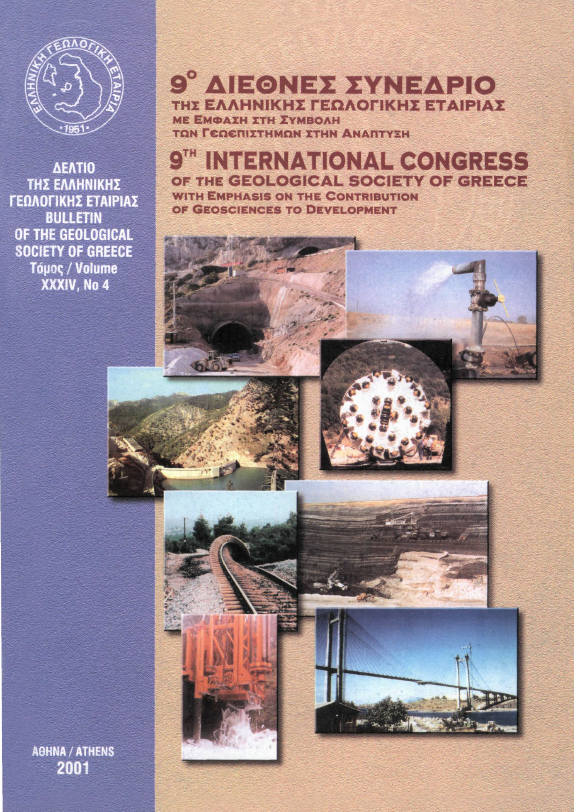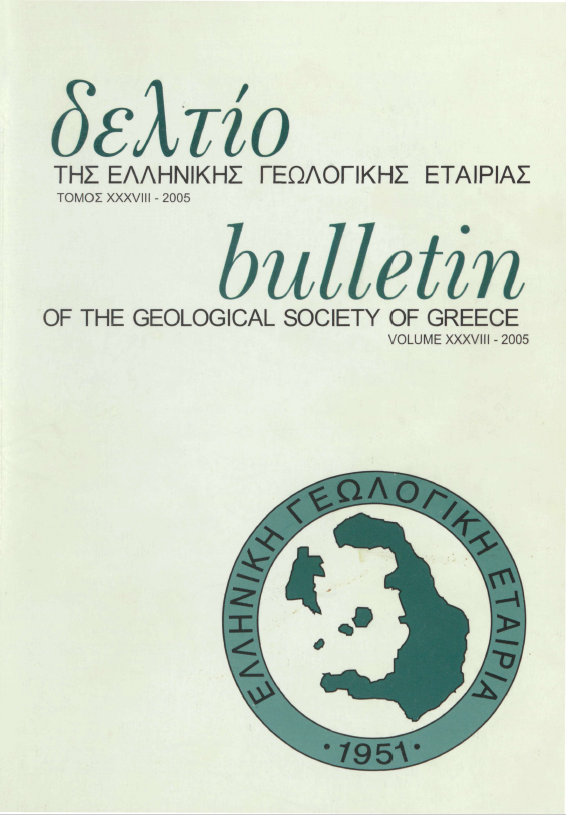Ενόργανες και υπαίθριες παρατηρήσεις για τον καθορισμό της σεισμογόνου δομής του σεισμού της 7ης Σεπτεμβρίου 1999 στην Αθήνα

Περίληψη
Αν και έχουν πραγματοποιηθεί πολυποίκιλες παρατηρήσεις για τη μελέτη του σεισμού της 7-9-1999 στην Αθήνα, δεν υπάρχει προς το παρόν ομογνωμία μεταξύ των επιστημόνων για το ποια ήταν η σεισμογόνος δομή. Για την επίλυση αυτοΰ του ζητήματος παρατίθενται σεισμογραφικές μετρήσεις και μακροσεισμικές και γεωλογικές παρατηρήσεις υπαίθρου. Οι μηχανισμοί γένεσης και οι επικεντρικοί προσδιορισμοί του κύριου σεισμού και των μετασεισμών δεν αφήνουν αμφιβολία ότι η διάρρηξη ήταν κανονική με ΔΒΔ-ΑΝΑ διεύθυνση και κλίση προς τα ΝΔ. Οι παρατηρήσεις υπαίθρου δείχνουν ότι τα μόνα γνωστά ρήγματα που έχουν τα γεωμετρικά χαρακτηριστικά που ανταποκρίνονται στα σεισμογραφικά δεδομένα είναι του Θριασίου Πεδίου και της Φυλής. Υποστηρίζουμε ότι το ρήγμα της Φυλής πιθανότατα απετέλεσε τη σεισμογόνο δομή γιατί είναι ενεργό, οι μέγιστες βλάβες και οι κύριες εδαφικές παραμορφώσεις παρατηρήθηκαν στο επικρεμάμενο τέμαχος (hanging- wall domain) και πλησίον του επιφανειακού του ίχνους, και επιπλέον παρατηρήθηκε πιθανή συνσεισμική μετακίνηση 3-6 cm . Αντίθετα, το ρήγμα του Θριασίου Πεδίου δεν έχει κανένα από αυτά τα γνωρίσματα. Επίσης, από τις υπάρχουσες παρατηρήσεις δεν προκύπτει ότι ίσως ενεργοποιήθηκε ένα «τυφλό ρήγμα»
Λεπτομέρειες άρθρου
- Πώς να δημιουργήσετε Αναφορές
-
ΠΑΠΑΔΟΠΟΥΛΟΣ Γ. Α., ΓΚΑΝΑΣ Α., & ΠΑΥΛΙΔΗΣ Σ. (2001). Ενόργανες και υπαίθριες παρατηρήσεις για τον καθορισμό της σεισμογόνου δομής του σεισμού της 7ης Σεπτεμβρίου 1999 στην Αθήνα. Δελτίο της Ελληνικής Γεωλογικής Εταιρείας, 34(4), 1457–1464. https://doi.org/10.12681/bgsg.17243
- Ενότητα
- Σεισμολογία

Αυτή η εργασία είναι αδειοδοτημένη υπό το CC Αναφορά Δημιουργού – Μη Εμπορική Χρήση 4.0.
Οι συγγραφείς θα πρέπει να είναι σύμφωνοι με τα παρακάτω: Οι συγγραφείς των άρθρων που δημοσιεύονται στο περιοδικό διατηρούν τα δικαιώματα πνευματικής ιδιοκτησίας επί των άρθρων τους, δίνοντας στο περιοδικό το δικαίωμα της πρώτης δημοσίευσης. Άρθρα που δημοσιεύονται στο περιοδικό διατίθενται με άδεια Creative Commons 4.0 Non Commercial και σύμφωνα με την οποία μπορούν να χρησιμοποιούνται ελεύθερα, με αναφορά στο/στη συγγραφέα και στην πρώτη δημοσίευση για μη κερδοσκοπικούς σκοπούς. Οι συγγραφείς μπορούν να: Μοιραστούν — αντιγράψουν και αναδιανέμουν το υλικό με κάθε μέσο και τρόπο, Προσαρμόσουν — αναμείξουν, τροποποιήσουν και δημιουργήσουν πάνω στο υλικό.




